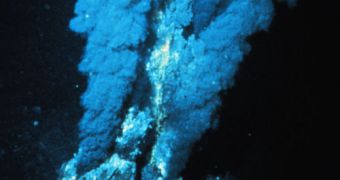For centuries, scientists have recognized that the world's oceans are the final frontier in biology. For the wide variety of fish and other marine species we know, many believe that we've only begun to scratch the surface of what lies under the surface. The deep ocean was long believed to be the least-explored and most promising regions for holding excessive biodiversity, but a new investigation finds that the real “reservoir” may be a little deeper, right in the ocean crust.
The research is so hopeful, that scientists believe this may be the largest, currently ignored areas in the world. “I think this research is exciting because it offers us a glimpse into a habitat on Earth that we know next to nothing about. If you consider how much ocean crust there is on Earth, and how much of that is hydrologically active, then this environment could be one of the most massive habitats for microbial life on Earth. There may be new species of life and new types of metabolism that we haven't discovered yet,” says University of Southern California (USC) and Aarhus University (Denmark) postdoctoral fellow Beth Orcutt.
Details of the investigation were presented today, June 14, at an annual conference called Goldschmidt 2010. The meeting is taking place at the US Department of Energy's (DOE) Oak Ridge National Laboratory (ORNL) and the University of Tennessee in Knoxville (UTK), and it's being sponsored by a large number of international geochemical societies. “I hope that the general public will understand that the ocean isn't just a giant pond with a featureless, unexciting bottom. The seafloor and sub-seafloor are exciting environments where microbes rule. We have to develop sophisticated experiments to try to learn more about these microbial habitats, experiments which will reveal new information about how life survives and thrives on Earth and maybe about how life may exist on other planets,” Orcutt adds.
The investigator and her colleagues have already developed a novel drilling technique for studying the ocean floor, with the limited means they had at their disposal for this small-scale investigation. First, a robotic submarine is used to dive at depth exceeding 2,660 meters. Then, machines drill through an additional 260 meters (850 feet) of sediment, until the layer of microbes the researchers are interested in is discovered. Applying this approach at a large scale, and with proper funding, could reveal new and exciting features of the microorganisms living in this environment.

 14 DAY TRIAL //
14 DAY TRIAL //